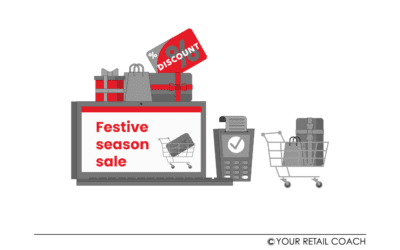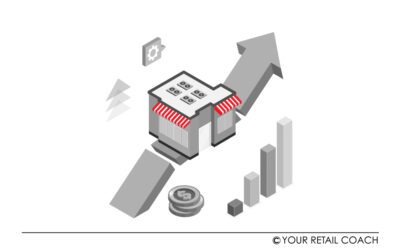Online Grocery Store Consulting
Online Grocery Store Consulting
Start Online Grocery / E-Grocery Business
Online grocery (also called as E-Grocery) is the newest addition to the growing e-commerce business across the globe. It not only offers convenience but also helps in taking over a chore that has to be done periodically. Although traditional grocery business is still influential, online grocery slowly but surely is making in-roads into the mind of the customer who just might switch over to online grocery services completely.
According to forecasts, it is likely to touch $10.5 billion by 2023. Such statistics are clearly indicative of the potential of online grocery as a business in the e-commerce domain. Even though there is enough room for multiple players in the online grocery space, the pace of growth remains slow.
This page tries to enumerate the main challenges associated with online grocery business. This write-up can also serve as a guide to the wannabe entrepreneur who wants to know – how to start a grocery business online?
Challenges Associated with Online Grocery Industry
- Developing a Viable Business Model
Many unsuccessful brands in the egrocery space failed to plan according to the emerging market conditions. One of the primary requisites for running a successful online grocery business is through correct anticipation of recurring costs and capital investments. Many online grocery brands that went out of business grossly underestimated recurring costs and capital investments, which tends to be on the higher side in online grocery compared to established e-commerce companies.
Such a scenario makes it imperative for online brands to correctly gauge the magnitude of these economic parameters to define an achievable number as the breakeven point. Unless a business is able to successfully forecast these numbers with some confidence – the viability & ROI related to the business hangs in balance.
- Use of Appropriate Order Management Software (OMS)
In a highly competitive online retail space, it is necessary that companies do not lose out to opportunities to impress a customer through accurate billing, and timely delivery. In most cases, it is observed that the selection of an OMS solution proves to be detrimental to a less-than-desired performance. An OMS by principle should allow a company to seamlessly – receive, confirm, and track delivery timelines with precision. If the OMS does not perform to established benchmarks, the chances of losing out on customers remains high.
- Creating a user-friendly Website/ App Interface:
The website and the app are the crucial interface between the customer and the online store. And the store has to make all the necessary efforts at making the experience worthwhile for the customer. Store owners must understand the crucial need to provide a localized experience to the user through an improved User Interface (UI). Apart from localization, stores must design a website/ app interface that is easy to use and navigate. It has been observed that on many occasions, online stores lose out on customers due to the complex mechanism put in place. To put things in perspective, the price cannot be the differentiating factor in an e-grocery store rather it is the shopping experience & service being offered to the customer.
- Standard Operating Procedures (SOPs):
As an online grocery store, your success will be directly proportional to how organized you are as a business. This would mean having formal and standardized systems in place for the benefit of all stakeholders in the organization. For instance, last-mile delivery is a critical component in the egrocery business.
Customers expect daily essentials to be delivered within hours, unlike an electronic item where a waiting period is tolerated. Unless you are able to deliver in a stipulated time frame on a consistent basis, you are really not providing value as a brand. This makes the entire online grocery operation a high-commitment service with thin margins and any lapses can be detrimental to the bottom line. Hence, well-defined SOPs can be a solution to many business functions within the organization, helping you provide a better service without mistakes that can prevent financial losses.
- Developing Robust IT Backend:
The outside world only gets to see the web interface on the online store when ordering an item. But, there are a myriad of activities that happen behind the scene which include order and inventory management, home deliveries, returns, automated warehousing, CRM systems, analytics.
All these systems support the smooth functioning of an e-commerce store, beginning with order and ending in-home delivery. These systems also help in reducing the costs associated through optimization of operational functions. Unless a business has in place robust IT systems, it will find it difficult to sustain in the long term. At YRC we have the necessary technical expertise in helping you in building a strong and resilient IT framework for an online grocery business.
- Planning Just-in-Time Procurement
Running an online grocery / E-Grocery store involves dealing with substantial quantities of perishable items such as milk, vegetables and fruits. Although infrastructure can be evolved to store such items within climate-controlled conditions, it does involve a massive infusion of capital. This can be avoided altogether if online grocery stores wake to the possibility of incorporating inventory analytics, wherein procurement is done in measured quantities only to meet the existing demand. Instead of buying in bulk and storing, it is about buying in the right quantity at the right time. This, in turn, will allow online stores to maintain positive cash flow and also reduce any kind of wastage associated with date expiry and pest infestations.
- Building Effective Marketing Strategies
The traditional form of marketing is paving the way for digital marketing at least in the digital domain. Online grocery stores have to incorporate effective digital marketing to succeed. The need here is to evolve an implementable strategy that will drive the marketing initiatives of the brand. There are numerous activities that can be done to drive marketing online. Starting from content marketing to paid advertising to search engine marketing (SEM) and the list can go on. The motto has to be “More Digital and Less Conventional” when adopting digital marketing.
Rather than replicating successful strategies and executions, it is better to understand the market, target audience and the inherent strength of the brand to drive a marketing campaign. Every brand is likely to have a customized roadmap and this need not be chalked out in-house rather it must be evolved by partnering with a digital agency which can help in doing so. With honest and credible inputs, a Management Consulting Company like YRC stands a better chance at executing an online marketing strategy aligned to business goals of an online brand.
- Understanding the Current Scenario
COVID has impacted the normal functioning of all businesses and online grocery business is no exception. Businesses have been forced to adopt safety measures across the board to safeguard both internal and external stakeholders. The situation demands that each stage of online business starting from procurement to storage to delivery has precautionary measures in place.
Such a situation makes it essential for a business to evolve guidelines to enforce safety measures. The better approach here is to formalize all tasks through Standard Operating Procedures (SOP) and follow it up with regular safety audits to monitor compliance. We at YRC come with the core competence for evolving and implementing SOPs at all stages of an online grocery business.
Why is YRC the Best Consulting Partner for an Online Grocery Business?
We come with the necessary experience of having dealt with online grocery brands and have helped them evolve as a brand. Our core expertise is not limited to SOPs but it extends to every business function associated with an online grocery store. We have in-house supermarket setup consultants who can help you set up an online grocery store right from the start or can help you with other related aspects like grocery dark store design etc. Over the years we have closely studied the growth of online supermarket business model across the globe to have grocery business consultants who can provide advisory and consulting services for setting up and growing an online grocery business with success.
Get Advice for Online Grocery / E-Grocery
Related Blogs
Making the most out of the festive season shopping: A Customer Perspective for Retailers
Decoding the Festive Shopping Spree For us, as customers, the festive season is a licence to spend. The vibes of festivity ushers with joy and a sense of celebration. This elevated mood often turns into an enhanced willingness to spend and indulge in shopping. It is a...
Mitigating Business Risks in Retail
Spotting the Swirls Sailing the stream of retail is canopying between opportunities on the surface and risks as the current of that stream. If the bad swirls are not spotted in advance, it can turn things undesirable. While big brands grapple with issues like lapses...
How Retailers are Enhancing Customer Experience (CX) with Hyper-Localisation
Hyper-localisation is an alignment strategy that helps retail brands and businesses mould into the requirements of a locality-based market environment. Marketing-wise, it helps retailers tailor their value propositions to cover the needs and expectations of highly...





We work only for Visionaries.